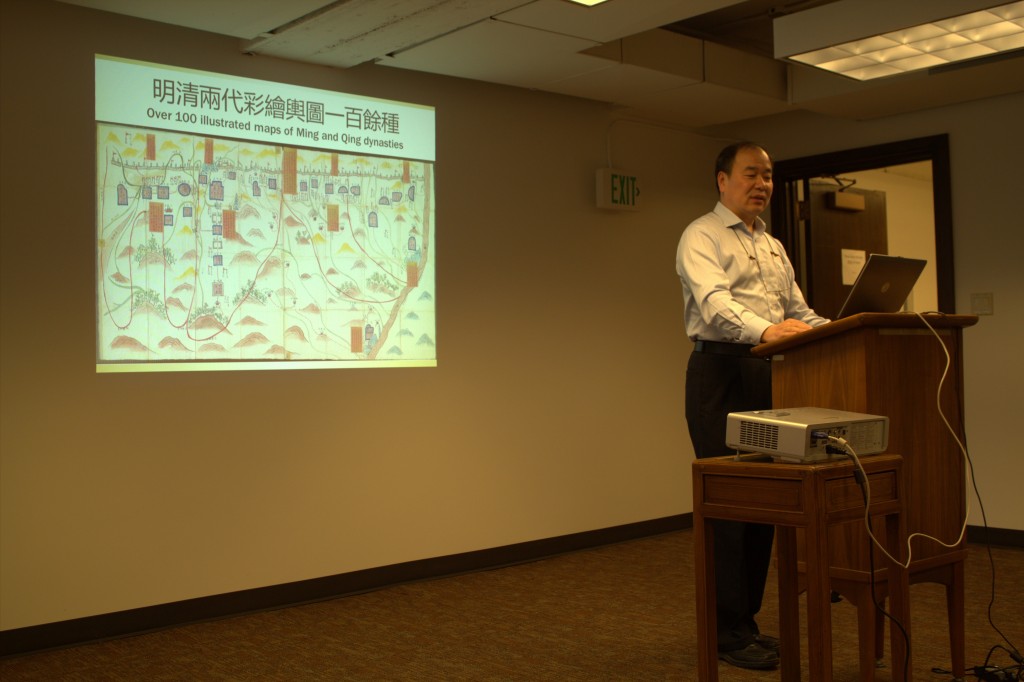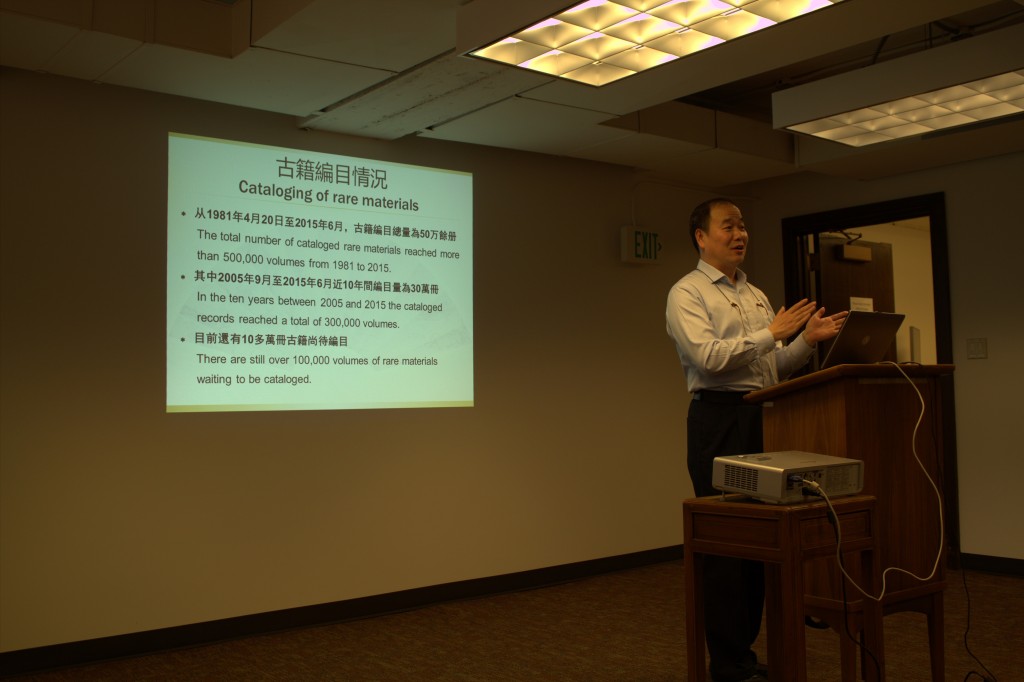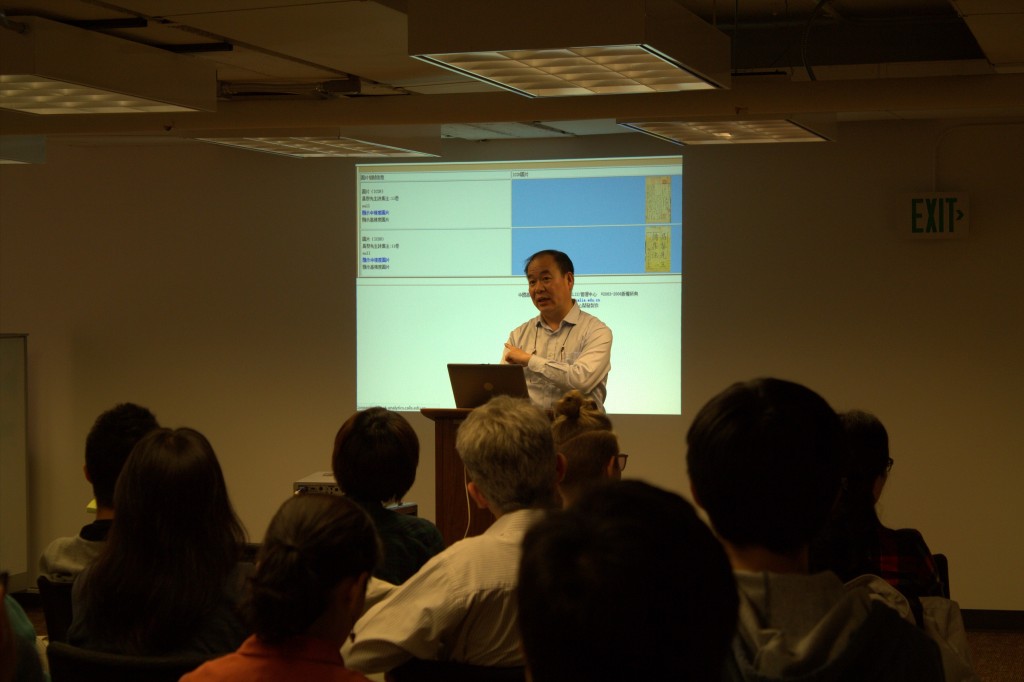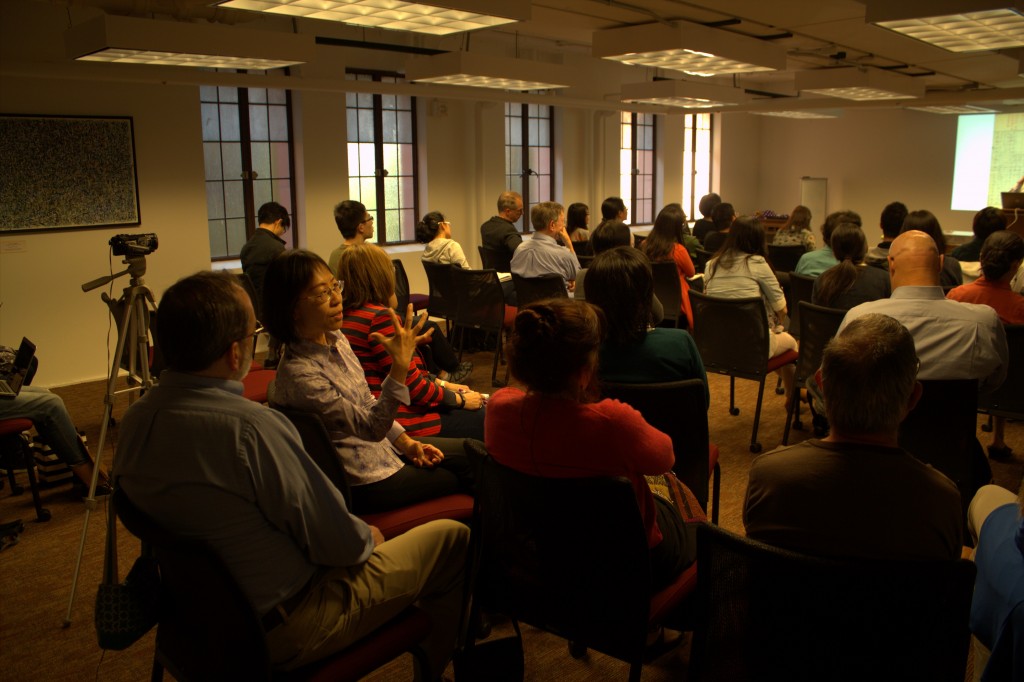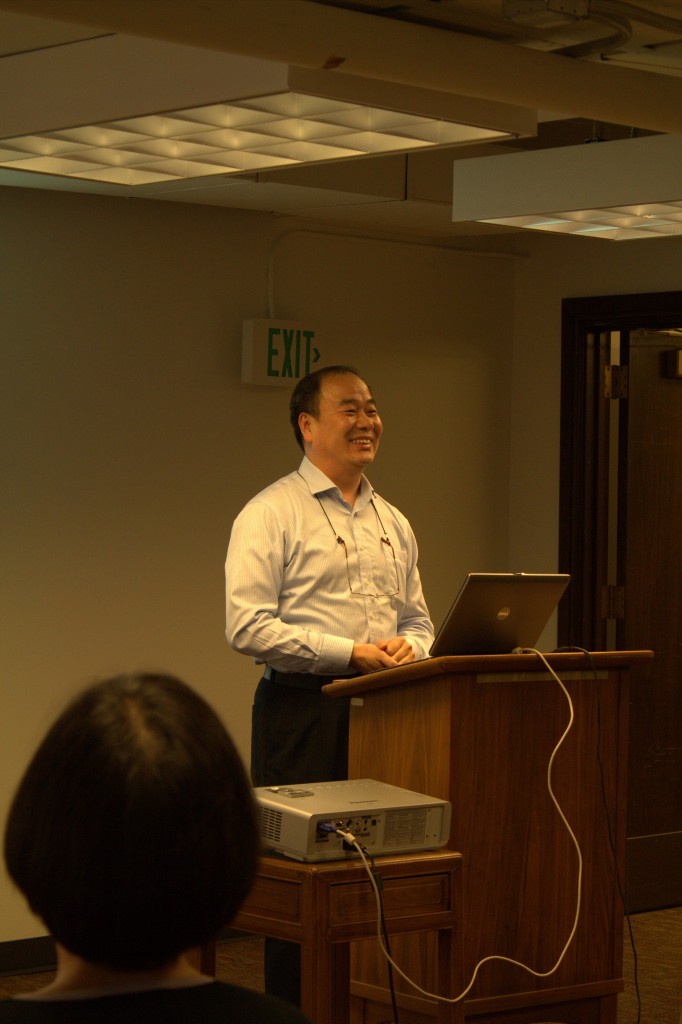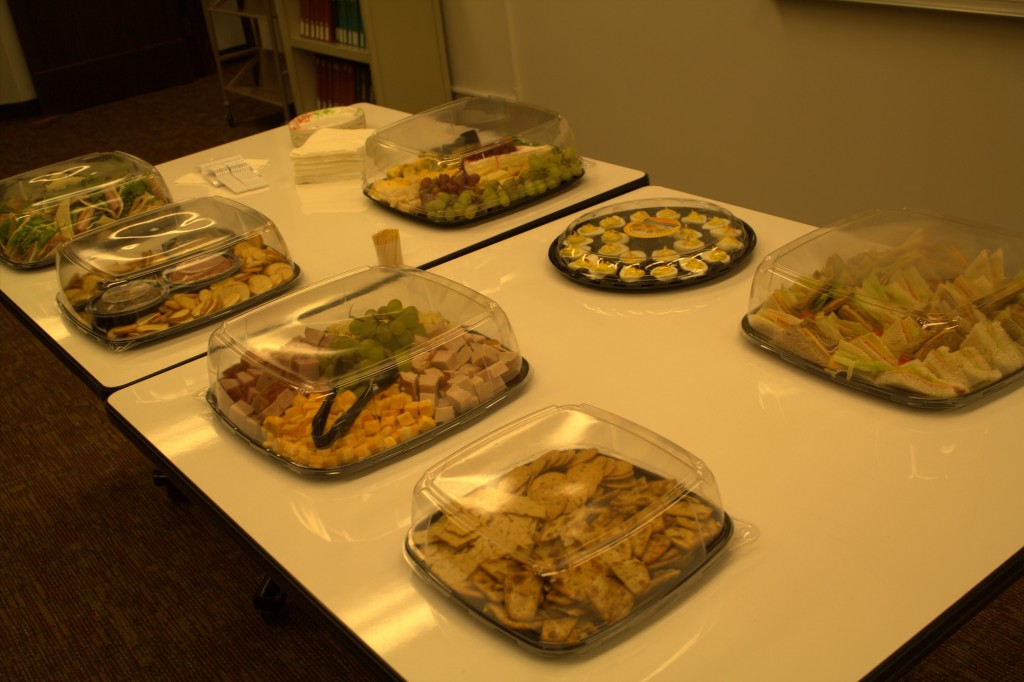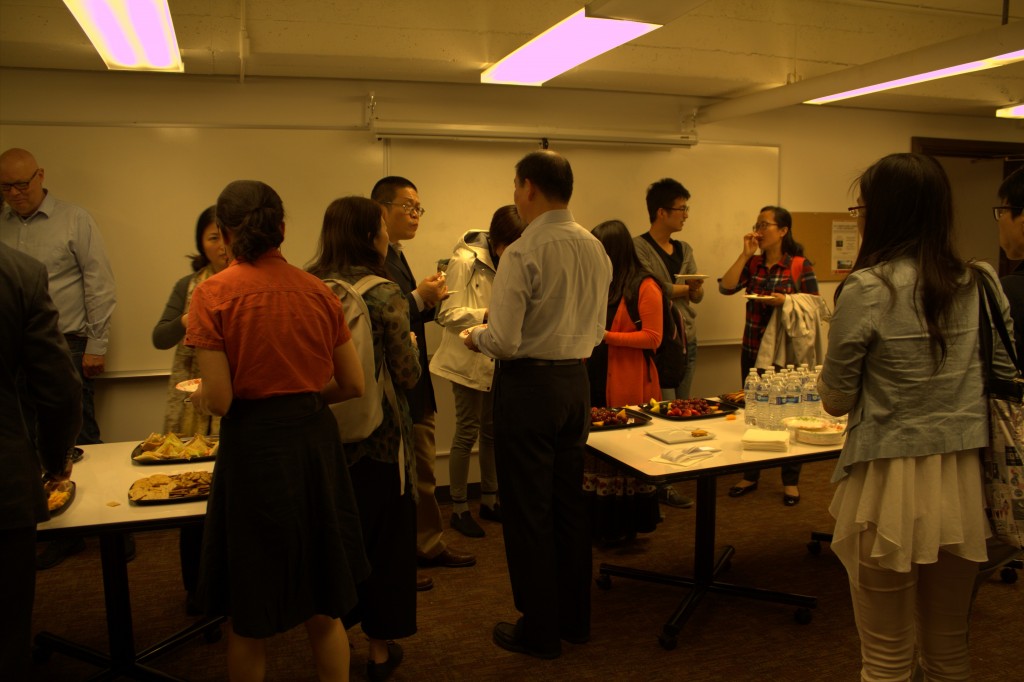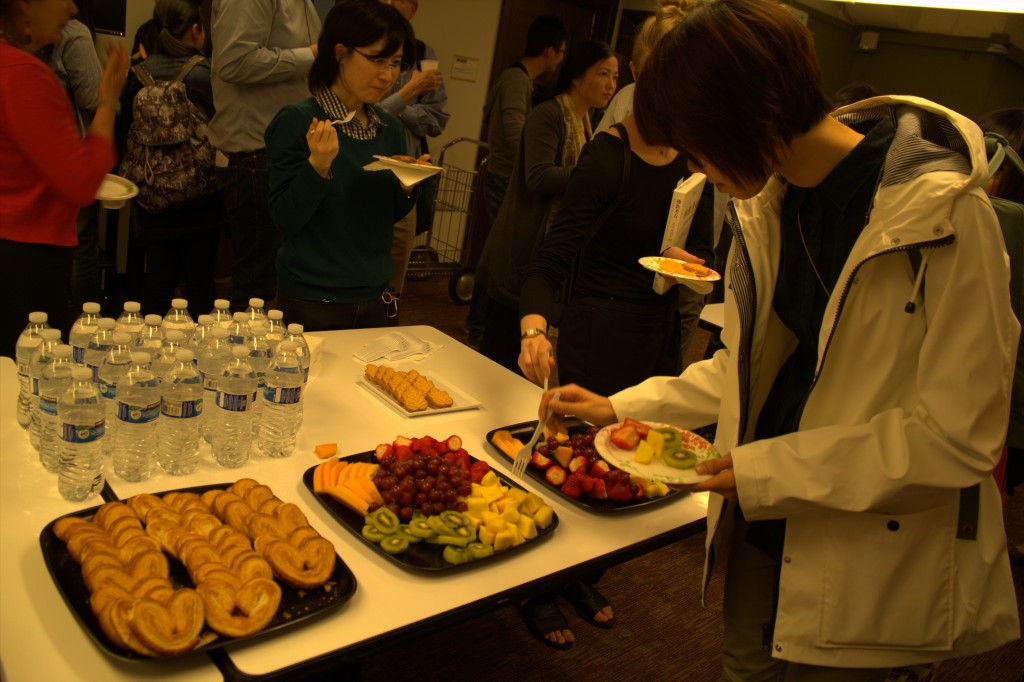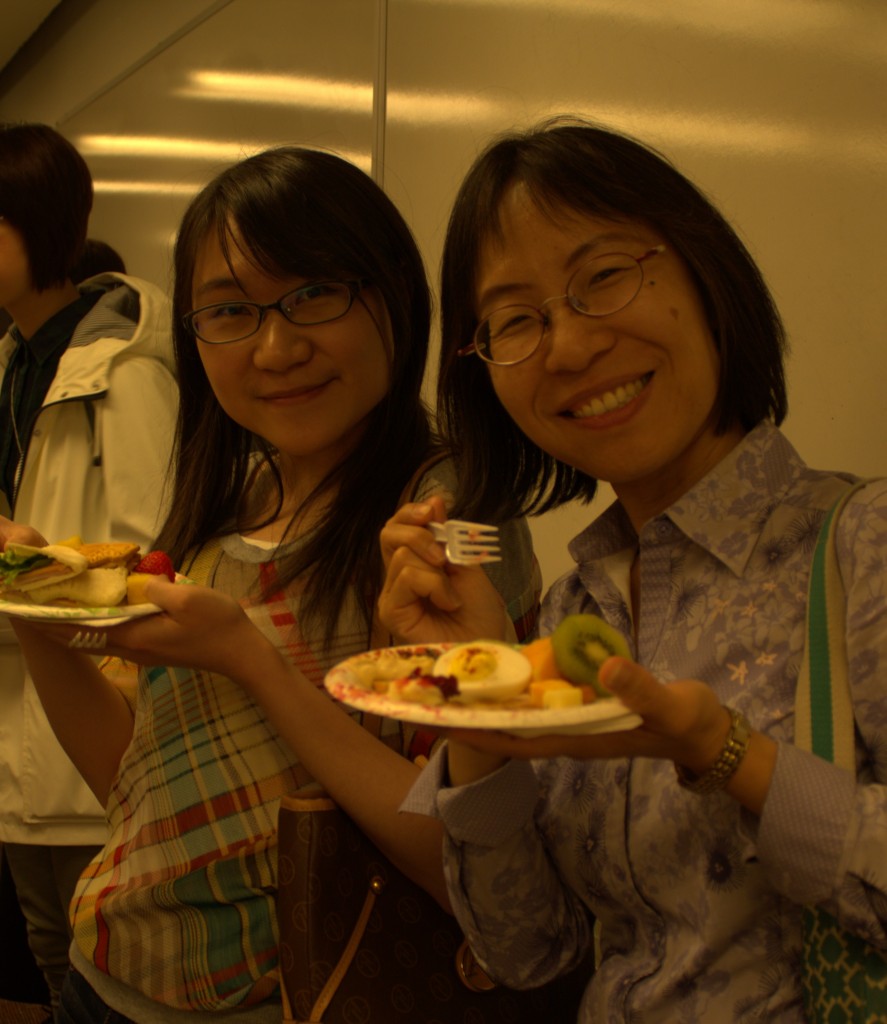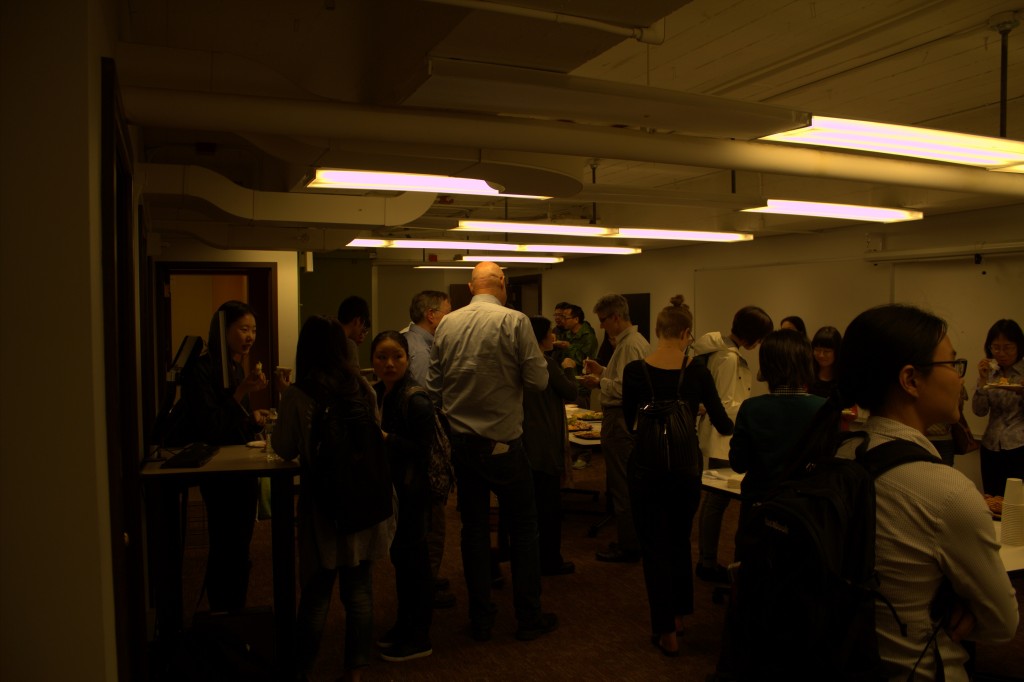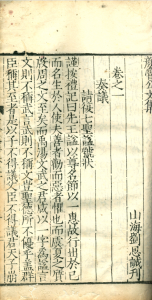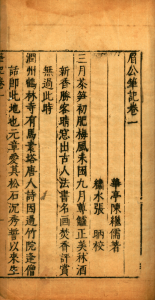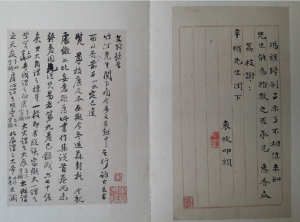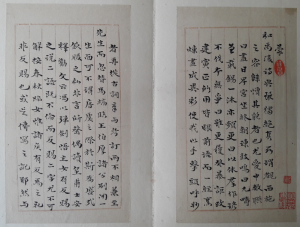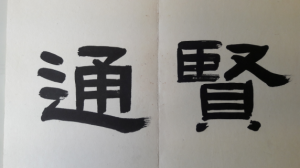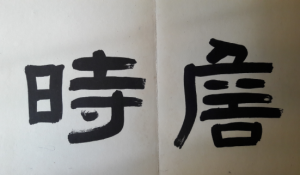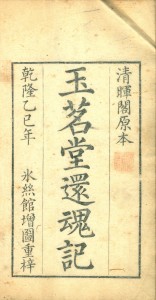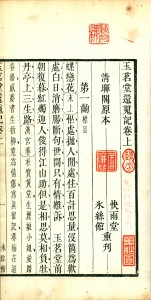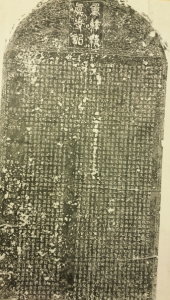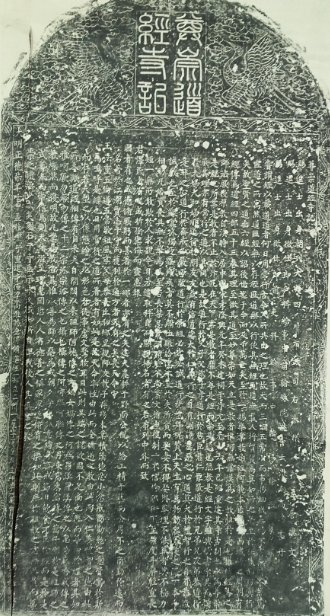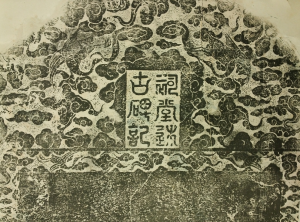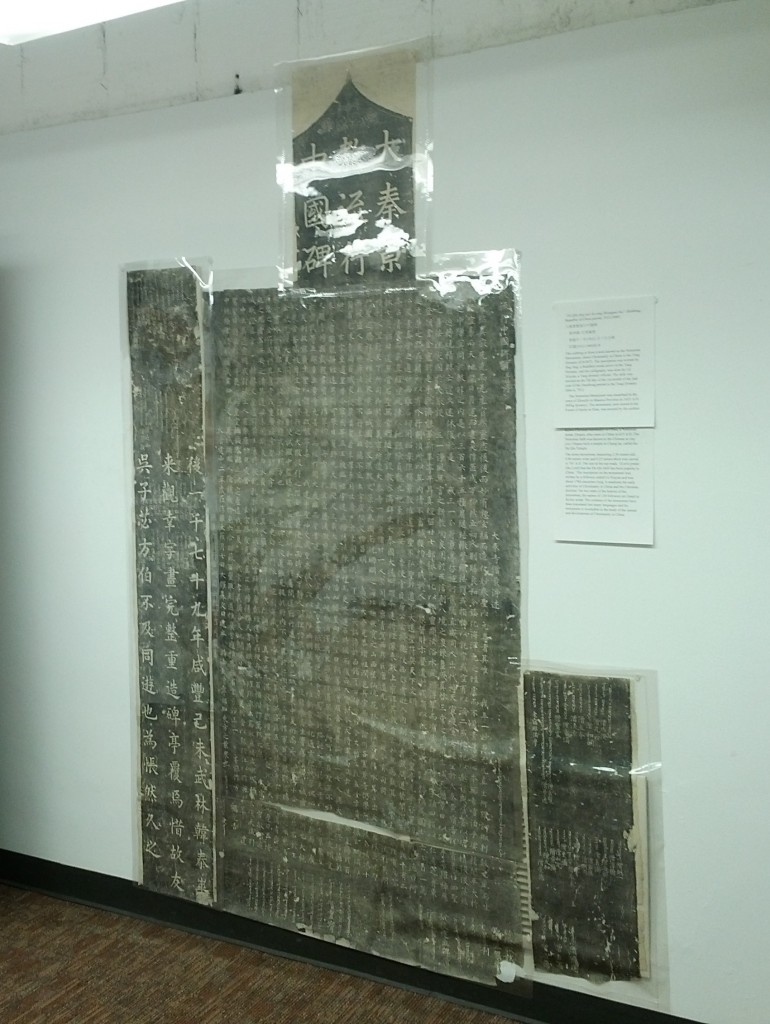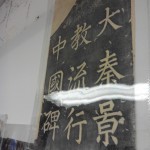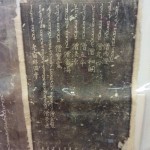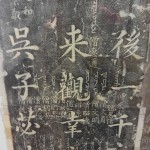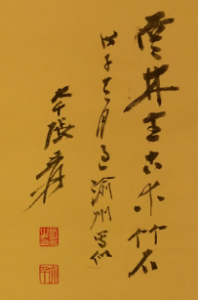All posts by Emily Jantz
Prof. Yao Presents about the CLIR Project and the Chinese Collections at UW and PKU (2016-05-10)
On May 10, Prof. Boyue Yao presented on the CLIR project, including many of the highlights of the materials cataloged for it, as well as general information and highlights of the UW Libraries and Peking University Library (his home institution) collection of Chinese string-bound books and other materials.
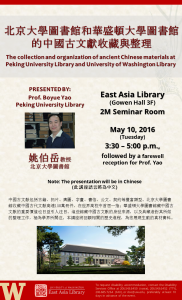
Five rare books from the Ming dynasty
The oldest books cataloged at UW as part of the CLIR project are these five books dating from the Ming dynasty (1368–1644).
顏魯公文集 (Yan Lugong wen ji)
《顏魯公文集》 四冊
顔眞卿
明萬曆十七年[1589]劉思誠刻本
“Collected works of Yan Lugong” (4 volumes)
By Yan Zhenqing (also known as Yan Lugong)
Published in 1589 by Liu Sicheng
Woodblock printing
朱文公校昌黎先生文集 (Zhu Wen gong xiao Changli xian sheng wen ji)
《朱文公校昌黎先生文集》 四冊
韓愈
明末[1605-1644]天德堂刻本
“Collected works of Han Yu, verified by Zhu Xi” (4 volumes)
By Han Yu (also known as Han Changli)
Published between 1605 and 1644 by Tian de tang
Woodblock printing
眉公筆記 (Meigong bi ji)
《眉公筆記》 二冊
陳繼儒
萬曆[1573-1620]沈氏尚白齋刻本
“Meigong’s notes” (2 volumes)
By Chen Jiru (also known as Chen Meigong)
Published between 1573 and 1620 by Shen shi shang bai zhai
Woodblock printing
松陵集 (Song ling ji)
《松陵集》 五冊
陸龜蒙, 皮日休[等]
天啟崇禎間[1621-1644]常熟毛晉汲古閣刻本
“Song ling ji” (5 volumes)
By Lu Guimeng, Pi Rixiu, etc.
Published between 1621 and 1644 by Mao Jin’s Ji gu ge
Woodblock printing
Collection of poetry from Tang dynasty writers including Lu Guimeng and Pi Rixiu
輟畊錄 (Chuo geng lu)
《輟畊錄》 八冊
陶宗儀
明崇禎[1628-1644]廣文堂刻本
“Chuo geng lu” (8 volumes)
By Tao Zongyi
Published between 1628 and 1644 by Guang wen tang
Woodblock printing
Selected anecdotes on history, culture, military, and politics from 1100 to 1368
Zhijia Shen & Jing Liu Present at AAS/CEAL Annual Conference (2016-03-31)
Project PI Zhijia Shen and Co-PI Jing Liu presented at the Committee on Chinese Materials meeting “Librarianship in Building Unique Online Resources through Institutional Collaboration” about the CLIR project. Their presentation was entitled “Collaborating to Provide Access to Rare & Special Collections at the University of Washington and the University of British Columbia.”
Rare manuscripts from the 18th century
Out of the six gaoben (稿本) and six xieben (寫本)—the English term “manuscript” is more general and covers both of these—these two compilations of letters from the 18th century are particularly rare and valuable:
錢宮詹時賢通札 (Qian gong zhan shi xian tong zha)
《錢宮詹時賢通札》 7通
秦蕙田,袁枚,盧文弨[等]
清乾隆[1736-1795]
稿本
“Letters to Qian Daxin from his scholar friends” (7 items)
By Qin Huitian, Yuan Mei, Lu Wenchao, etc.
Written between 1736 and 1795
Manuscript
Qian Daxin (1728–1804) was a philosopher, historian and writer in the Qing dynasty, who served as a commissioner of education and examinations in Guangdong Province. He published a number of important works relating to historical topics, as well as many poems and prose essays. The letters here were written to him by various other contemporary scholars of his acquaintance.
陳法孫嘉淦致山東某同年友書札合集 (Chen Fa Sun Jiagan zhi Shandong mou tong nian you shu zha he ji)
《陳法孫嘉淦致山東某同年友書札合集》 三冊
陳法, 孫嘉淦
清[1713-1745]
稿本
“Collection of letters from Chen Fa and Sun Jiagan” (3 volumes)
By Chen Fa (1692-1766) and Sun Jiagan(1683-1753)
Written between 1713 and 1745
Manuscript
The letters are mounted on stiff paper and compiled into this three-volume set. Thirty-five of the letters are written by Chen Fa and forty-seven of them by Sun Jiagen. The letters date from the Kangxi era (1662-1722) through the Qianlong era (1736-1796), specifically from the period from 1713 to 1745. The addressee is not named, but they appear to be from Shandong, and to have passed the imperial exam before Chen and Sun did—thus it is suspected that the letters were written to Li Yuanzhi (李元直, 1686-1758).
玉茗堂還魂記 (Yu ming tang huan hun ji)
《玉茗堂還魂記》 二卷五十五齣, 六冊
湯顯祖
清乾隆五十年[1785]氷絲館刻本
“The Peony Pavilion” (2 sections (55 scenes) in 6 volumes)
By Tang Xianzu
Published in 1785 by Bing si guan
Woodblock printing
This is a romance drama written by Tang Xianzu (1550-1616), a famous dramatist from the Ming dynasty. Many versions of this famous play have been published. This woodblock printed edition from 1785 is one of twelve rare woodblock printed books between 1736 and 1796 (the reign period of the Qing dynasty Qianlong Emperor) that were discovered and cataloged at UW as part of this CLIR project.
Zhijia Shen & Jing Liu Book Project Supported by CLIR Microgrant
Project CO-PIs, Zhijia Shen and Jing Liu, applied for and received a CLIR micro-grant of $3000 to help with work to publish a volume on the UW-UBC collaborative CLIR project. They have successfully secured a book contract with Zhonghua Shuju, one of China’s best publishers on topics of Chinese culture and history. The book is scheduled for publication by the end of 2016.
This microgrant program—”Microgrants for Incentivizing Collaboration”—from CLIR offers small grants in support of further collaboration and cross-project connections among recipients of their Cataloging Hidden Special Collections and Archives grants.
Rubbings from Three Jewish Steles in Kaifeng
These three rubbings document some of the interesting history of Judaism and Jewish people in China. The steles date from the 15th through 17th century in Kaifeng—a city which was home to a Jewish community for many hundreds of years.
重建清真寺記 (Chong jian Qing zhen si ji)
重建清真寺記(清末拓本)
金鍾撰 ; 曹佐書
明弘治二年五月吉日[1489]開封 金瑛, 金禮立石
碑石原立於開封一賜樂業清真寺(猶太教), 現存河南開封博物館
“Record of the synagogue reconstruction”
By Jin Zhong ; calligraphy by Cao Zuo
Stele erected in 1489 in Kaifeng by Jing Ying and Jin Li, rubbing produced in the late Qing dynasty
Stele originally located at a synagogue in Kaifeng, now held at the Kaifeng Museum of Jewish History
This rubbing is from the oldest of the three steles. Its contents are in three sections; one explains the origin and history of Judaism, another describes the rituals and worship of Chinese Jews around the time of the stele construction, and the last tells of a past imperial audience.
尊崇道經寺記 (Chen Fa Sun Jiagan zhi Shandong mou tong nian you shu zha he ji)
尊崇道經寺記 (清末拓本)
左唐撰 ; 高考書
明正德七年[1512]七月甲子日開封刻 尊崇道經寺
碑石原立於開封一賜樂業清真寺(猶太教), 現存河南開封博物館
“History of the Daojing synagogue”
By Zuo Tang ; calligraphy by Gao Kao
Stele carved in 1512 in Kaifeng, rubbing produced in the late Qing dynasty
Stele originally located at a synagogue in Kaifeng, now held at the Kaifeng Museum of Jewish History
This rubbing is from the second oldest of the three steles, which dates from 1512 and details the religious practices of the Jews in China at that time.
祠堂述古碑記 (Ci tang shu gu bei ji)
祠堂述古碑記 (清末拓本)
趙承基撰 ; 韓尚武, 程銀鐫刻
清康熙十八年[1679]開封刻石
碑石原立於開封一賜樂業清真寺(猶太教), 現存河南開封博物館
“Stone record of the temple history”
By Zhao Chengji ; engraved by Han Shangwu and Cheng Yin
Stele carved in 1679 in Kaifeng, rubbing produced in the late Qing dynasty
Stele originally located at a synagogue in Kaifeng, now held at the Kaifeng Museum of Jewish History
This is the third and most recent of the Jewish stele rubbings held at UW.
大秦景教流行中國碑 (Da Qin jing jiao liu xing Zhongguo bei)
大秦景教流行中國碑(民國拓片)
景凈撰 ; 呂秀巖書
唐建中二年[781]1月7日立碑
原碑現藏陝西西安碑林
“Nestorian Monument” (Rubbing, Republic of China period)
By Jing Jing ; Calligraphy by Lü Xiuyan
Stele erected in 781, now held in the Xi’an Forest of Steles
These rubbings are from a stele known as the Nestorian Monument, about Christianity in China in the Tang Dynasty (618-907). The inscription was written by Jing Jing, a Buddhist monk active in the Tang Dynasty, and the calligraphy was done by Lü Xiuyan, a Tang dynasty official. The stele was erected on the 7th day of the 1st month of the 2nd year of the Jianzhong period in the Tang Dynasty (that is, 781).
The Nestorian Monument was unearthed in the town of Zhouzhi in Shaanxi Province in 1623 A.D. (Ming dynasty). The monument, now stored in the Forest of Steles in Xian, was erected by the earliest known Christian missionary to China, a Nestorian monk, Olopen, who came to China in 635 A.D. The Nestorian faith was known to the Chinese as jing jiao. Olopen built a temple in Chang’an, called the Da Qin Temple.
The original stone monument, measuring 2.36 meters tall, 0.86 meters wide and 0.25 meters thick was carved in 781 A.D. The text at the top reads ‘(Let’s) praise (the Lord) that the Da Qin faith has been popular in China.’ The inscription on the monument was written by a follower called Lü Xiuyan and was about 1780 characters long. It mentions the early activities of Christianity in China and the Christian doctrine. On two sides of the bottom of the monument, the names of 128 followers are listed in Syriac script. The contents of the monument have been translated into many languages and the monument is invaluable to the study of the spread and development of Christianity in China.
Original paintings
Over the course of the CLIR project, we also discovered eight original paintings. Here are two examples:
雲林生古木竹石 (Yunlinsheng gu mu zhu shi )
《雲林生古木竹石》
張大千作
戊子[1948]
“Old trees, bamboo, and stones”
Painted by Zhang Daqian
Produced in 1948
Zhang Daqian (1899-1983) was one of the best-known and most prodigious Chinese artists of the twentieth century. He was not only a well-known traditionalist painter, but also renowned as a modern impressionist and expressionist painter, as well as an extremely gifted forger.
開卷有益 (Kai juan you yi)
《開卷有益》
傅申書
戊午[1978]
“It’s beneficial to open a book”
Painted by Fu Shen
Produced in 1978
Fu Shen (1937-) is an eminent Chinese art historian, world-renowned connoisseur of painting and calligraphy, and a practicing calligrapher and painter.


